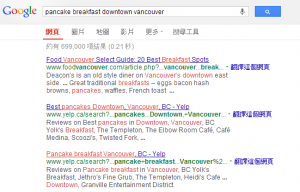Today is your first day in Downtown, Vancouver. You wake up at 10:00 a.m. and feel so hungry after spending your whole night to move in this place. As a result, you decide to buy your favorite food, pancakes as your breakfast and try to search the keyword “pancake breakfast downtown vancouver” on the internet. Unfortunately, you can find nothing related to the shops which are selling them (NO marketing!). You are disappointed and decide to find the shops yourself. Since all the shops look like the same, you cannot know what kinds of goods they are selling. You go in one by one but you can only find burger, sandwich or Chinese buns. Finally, you choose to give up and have a burger.
This story seems ridiculous. However, it also reminds us marketing appears everywhere and it does affect our life every moment. Without marketing, you will never know where you can find the things (as simple as your breakfasts) you need. Then, you will need to spend so much time to search for the shops yourself. Otherwise, you may choose to give up and get the things that may not be your first choice (burger in the example). Even worse, you may even don’t know that kinds of products are available to buy in the stores.
Just like a gun, marketing isa tool. You can use it to make our life easier, more convenient and satisfied or you can use it to deceive others. It depends on the users but not the tool. I think it is better for us to understand what marketing is by appreciating how do marketing satisfy our needs before making a judgment that marketing is creating illusions.


